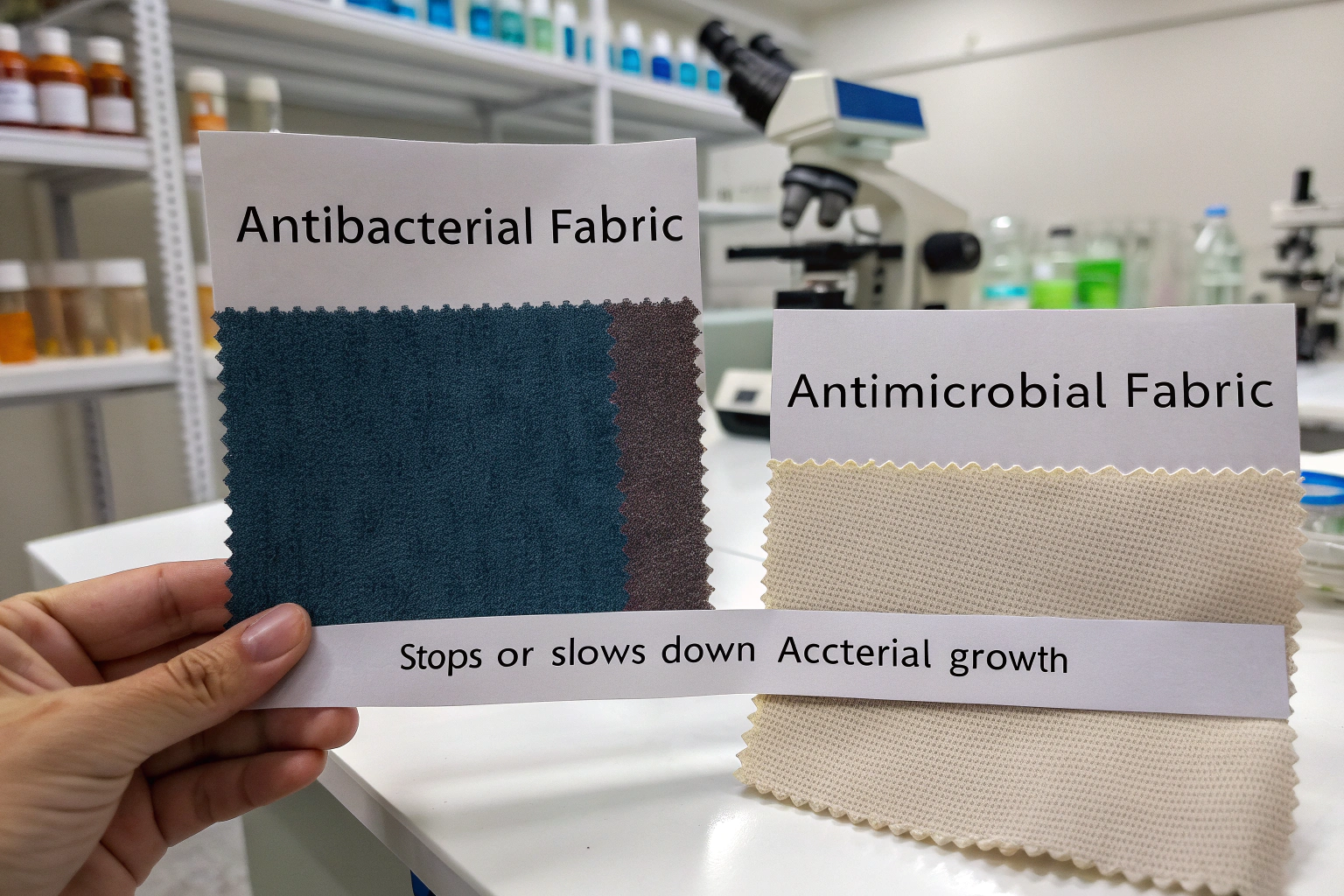When most people think about fabrics, their first concerns are usually color, texture, or softness. But in the modern textile market, where sportswear, medical uniforms, and even luxury home furnishings demand more than aesthetics, there is rising interest in fabrics that do something extra: they fight against bacteria, fungi, and sometimes even viruses. Buyers in industries like healthcare, athleisure, and hospitality are no longer satisfied with fabrics that simply look nice—they want textiles that can actively improve hygiene, reduce odors, and extend product life. This raises an important question: what exactly makes a fabric antibacterial or antimicrobial, and why should businesses care?
In simple terms, antibacterial fabrics are designed to stop or slow down the growth of bacteria, while antimicrobial fabrics go one step further by targeting a broader range of microorganisms, including fungi and, in some cases, viruses. These advanced properties can come from naturally occurring compounds within fibers, special chemical finishes applied during production, or even innovative structural designs at the microscopic level.
For buyers in the United States and Europe, this is not just a scientific curiosity—it directly impacts consumer satisfaction, brand reputation, and even regulatory compliance. Let’s take a closer look at how this works in practice.
How Do Natural Fibers Provide Antimicrobial Protection?
Some fibers naturally resist microbial growth. This means that even before any modern treatments are added, they already provide a certain level of odor resistance and hygiene benefits.
Wool’s Protective Properties
Wool, especially Merino wool, has a complex structure that makes it naturally resistant to bacterial growth. Its fibers contain keratin and a protective waxy coating called lanolin, which creates an environment where bacteria find it difficult to survive. A 2019 study published in the Journal of Applied Microbiology demonstrated that wool fabrics showed significantly lower bacterial growth compared to untreated cotton after 24 hours of exposure to Staphylococcus aureus. That’s one reason why outdoor brands such as Icebreaker and Smartwool proudly market their Merino wool products as odor-resistant, even after multiple days of wear.
Bamboo Viscose and Its Bio-Agent
Bamboo fibers are associated with “bamboo kun,” a naturally occurring bio-agent that resists bacteria and pests. While much of the raw bamboo is processed into viscose or rayon, which reduces the concentration of bamboo kun, many studies show that properly treated bamboo viscose fabrics still retain superior odor resistance compared to standard cotton. Bamboo is also appealing because it grows rapidly, requires fewer pesticides, and is considered more eco-friendly. According to Textile Exchange, bamboo cultivation can yield up to 20 times more fiber per hectare than cotton, making it an efficient and sustainable option for antimicrobial textiles.
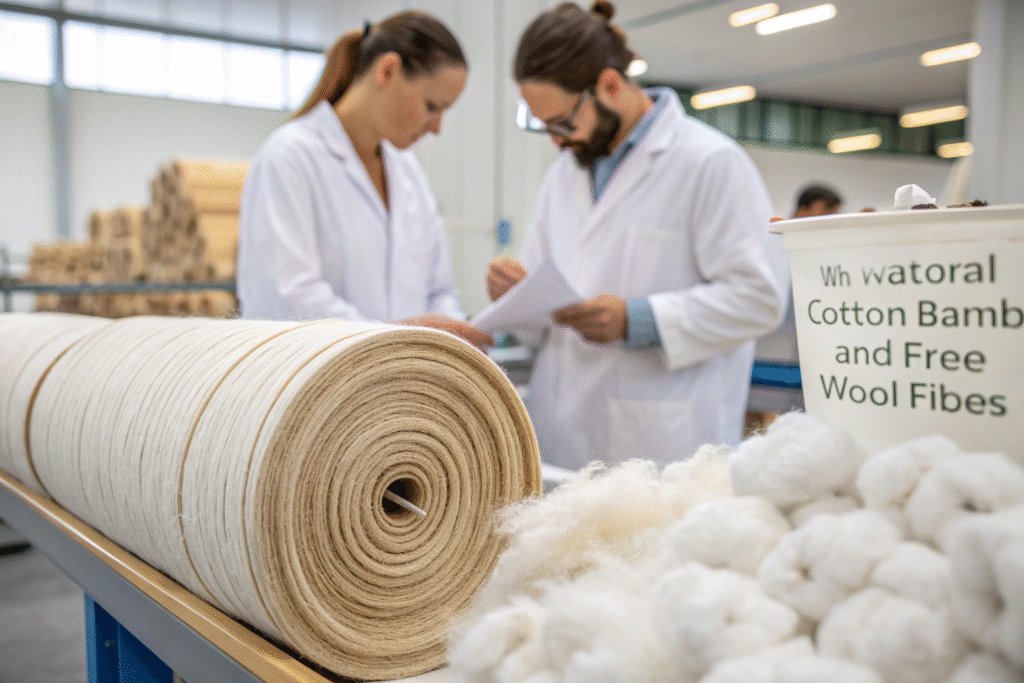
Why Does Wool Resist Odor Better Than Cotton?
Wool fibers have a scaly surface that repels moisture, keeping sweat away from bacterial colonies. Cotton, on the other hand, absorbs large amounts of water—up to 27 times its own weight—creating a breeding ground for bacteria. This explains why a cotton T-shirt often develops odor after just one workout, while a Merino wool base layer can stay fresh for several days of hiking.
Is Bamboo Really Antibacterial After Processing?
While the process of converting bamboo into viscose reduces some of its natural antibacterial properties, many modern manufacturers combine bamboo fibers with antimicrobial finishes to reinforce their effectiveness. For example, bamboo-cotton blends treated with silver-based coatings have shown odor reduction rates of up to 95% in ISO 20743 tests, making them a viable alternative for sustainable activewear.
What Role Do Chemical Finishes Play in Antibacterial Fabrics?
For most synthetic fibers like polyester and nylon, which lack natural resistance to bacteria, antimicrobial properties are achieved through chemical finishes or treatments. These finishes can be embedded into the fiber during extrusion or applied as a coating during the dyeing or finishing stage.
Silver Ions: The Classic Choice
Silver has been used as a disinfectant for centuries, and in textiles, silver ions are embedded into fibers to inhibit bacterial growth. These ions interfere with enzymes inside bacterial cells, ultimately killing them. A report by Polygiene shows that silver-based treatments can reduce bacterial growth by 99.9% in controlled lab conditions. Popular sportswear brands like Adidas and Lululemon rely on such finishes to ensure their performance apparel remains odor-free even after intense workouts.
Other Treatments: Chitosan and Copper
Chitosan, a biopolymer derived from shellfish shells, is biodegradable and effective against a wide range of bacteria. In fact, a 2020 paper in Carbohydrate Polymers noted that chitosan-treated cotton fabrics inhibited Escherichia coli growth by more than 95%. Similarly, copper-based finishes are increasingly popular in hospital textiles, with NIH research showing copper-infused bed linens reduced hospital-acquired infections by over 50%. These options not only enhance fabric functionality but also appeal to eco-conscious markets seeking sustainable alternatives.
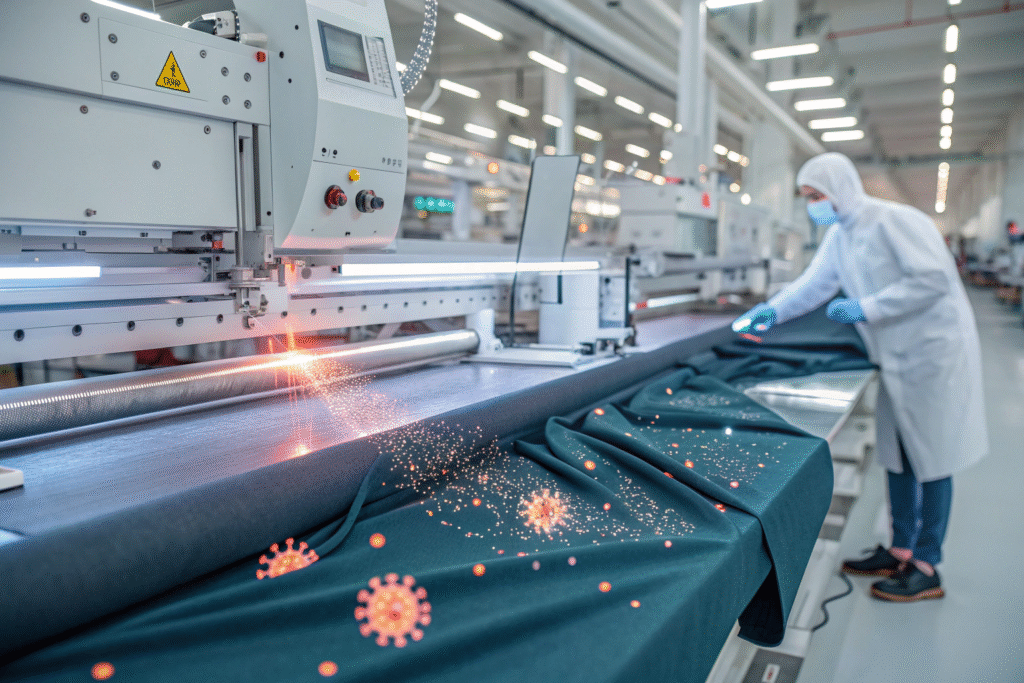
Do Silver Treatments Wash Out Over Time?
Durability is one of the main concerns buyers raise. Traditional silver coatings would often wash out within 10 cycles, but modern bonding technologies like “ion exchange” and “plasma treatment” have extended the life of silver finishes to 50–70 washes, depending on the application. To verify durability, buyers should request wash-resistance data according to the AATCC 61 laundering test standard.
Are Natural Antimicrobial Finishes Safer Than Synthetic Ones?
Natural treatments like chitosan are generally considered safer for skin contact and better for the environment. However, they may lose effectiveness faster than synthetic treatments under repeated laundering. For example, chitosan’s activity often drops below 70% after 20 washes, while silver can maintain over 90% activity even after 50 washes. Therefore, brands targeting premium sportswear markets may prioritize durability, while eco-brands may choose chitosan for its marketing appeal.
How Does Fabric Structure Influence Microbial Growth?
Beyond fiber type and chemical treatment, the very structure of the fabric plays a role in microbial resistance. Engineers can design fabrics with properties that reduce microbial colonization even without added chemicals.
Hydrophobic Surfaces
Polyester and nylon fabrics are inherently hydrophobic, meaning they do not retain water. This helps them dry quickly and reduces the time bacteria have to multiply. Brands like Under Armour highlight their “Moisture Transport System,” which wicks sweat away from the body, leaving less residue for bacteria to thrive on.
Nano-Engineering
Textile researchers now create fabrics with nano-scale textures that mimic natural surfaces like lotus leaves, which are known for their self-cleaning abilities. These nano-textures reduce bacterial adhesion by up to 80%, as shown in a 2021 Nature Nanotechnology article. While more expensive to produce, nano-engineered fabrics appeal to premium markets like medical scrubs and high-performance sportswear.
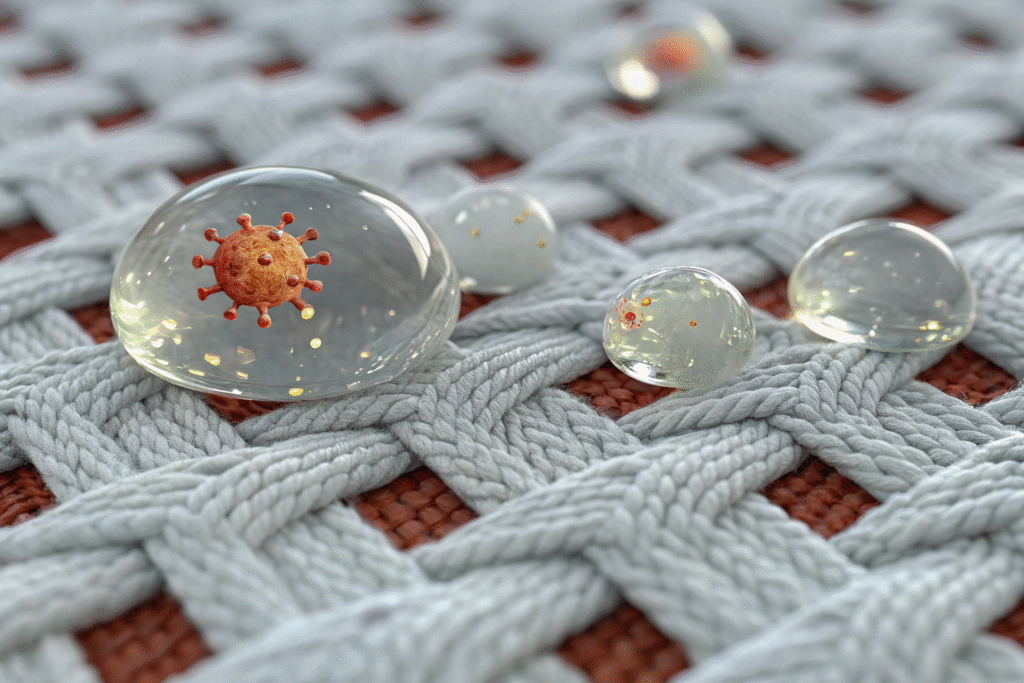
Do Quick-Dry Fabrics Always Stay Fresh?
Quick-dry properties alone are not enough. While reduced moisture slows bacterial growth, sweat residues, skin oils, and dead cells can still cause odors. That is why many manufacturers combine hydrophobic fibers with antimicrobial finishes, ensuring a dual defense against both moisture and microbial growth.
How Do Nano-Textures Compare to Chemical Finishes?
Nano-structures have the advantage of being permanent since they are built into the fiber itself, not applied on top. This makes them more sustainable in the long term. However, they require costly equipment and precise manufacturing processes, limiting them to niche markets for now.
What Testing Standards Prove Antibacterial Claims?
With so many marketing claims in the textile industry, standardized tests are essential to prove whether a fabric is truly antibacterial.
AATCC 100 (American Standard)
This is the most widely used antibacterial textile test in North America. It measures bacterial reduction over time in a controlled environment. For example, a polyester fabric treated with silver ions might demonstrate a 99% reduction in Klebsiella pneumoniae bacteria within 24 hours, making it highly suitable for medical uniforms. More details are available on AATCC’s website.
ISO 20743 (International Standard)
This global standard evaluates antibacterial activity under simulated real-life conditions, such as fabrics in contact with human sweat. A fabric that passes ISO 20743 is considered reliable for international markets, particularly Europe and Asia. Many brands exporting to the EU demand compliance with this standard to avoid customs issues.
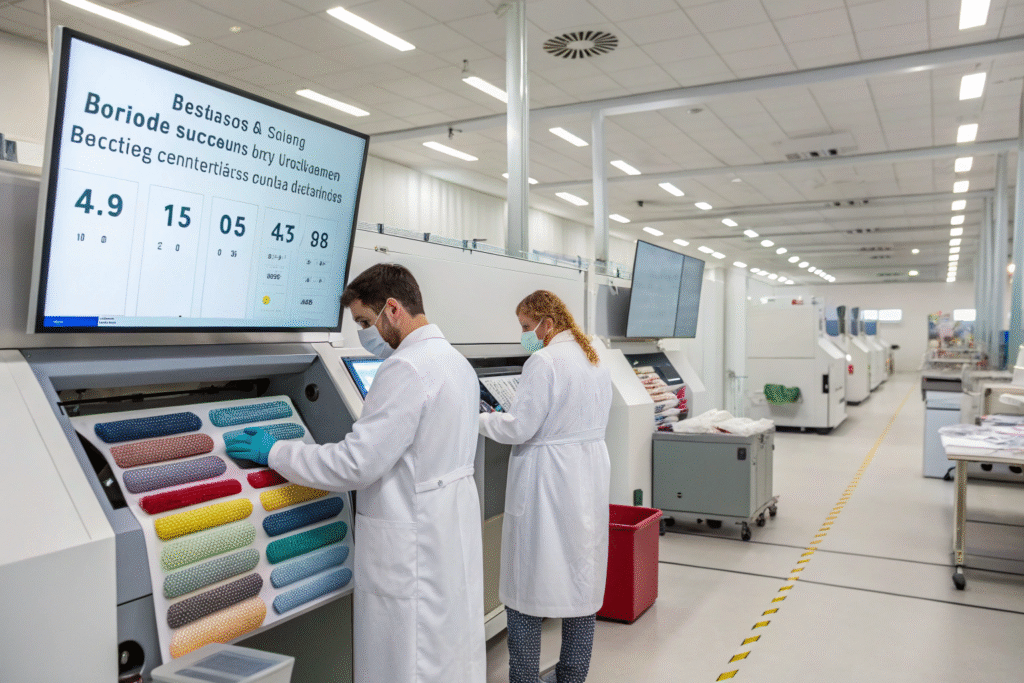
Do All Fabrics With Antibacterial Labels Meet Standards?
Not necessarily. A 2021 survey by Textile Today revealed that nearly 35% of fabrics marketed as “antibacterial” in Southeast Asia lacked proper certification. This means buyers must be cautious and request official test reports. Third-party testing by labs such as SGS and Intertek ensures authenticity and credibility.
Why Should Buyers Ask for Certified Lab Tests?
Requesting certified test results reduces risks of customer complaints, product recalls, and legal disputes. For example, in 2020, a U.S. sportswear brand faced a lawsuit when its “antibacterial” yoga pants failed ISO 20743 testing. By asking for certificates upfront, buyers not only protect themselves legally but also gain a competitive edge in consumer trust.
Conclusion
Antibacterial and antimicrobial fabrics are no longer a niche offering—they are an essential part of modern apparel, healthcare, and home textiles. Wool and bamboo provide natural odor resistance, while finishes like silver, copper, and chitosan deliver scientifically proven protection. Structural innovations such as hydrophobic surfaces and nano-textures add another layer of defense. Most importantly, certified testing through AATCC and ISO standards ensures that claims are real and durable.
For buyers and brand owners, the decision often comes down to balancing durability, sustainability, and cost. Whether you are sourcing fabrics for medical scrubs, performance apparel, or luxury home goods, choosing the right antimicrobial textile can enhance product quality, reduce returns, and build stronger consumer trust.
If you are planning to develop your own collection with certified antibacterial fabrics, our team at Shanghai Fumao is here to help. We offer full-chain services from weaving to finishing, with proven certifications and fast delivery. To discuss your order, you can contact our Business Director Elaine at elaine@fumaoclothing.com.

